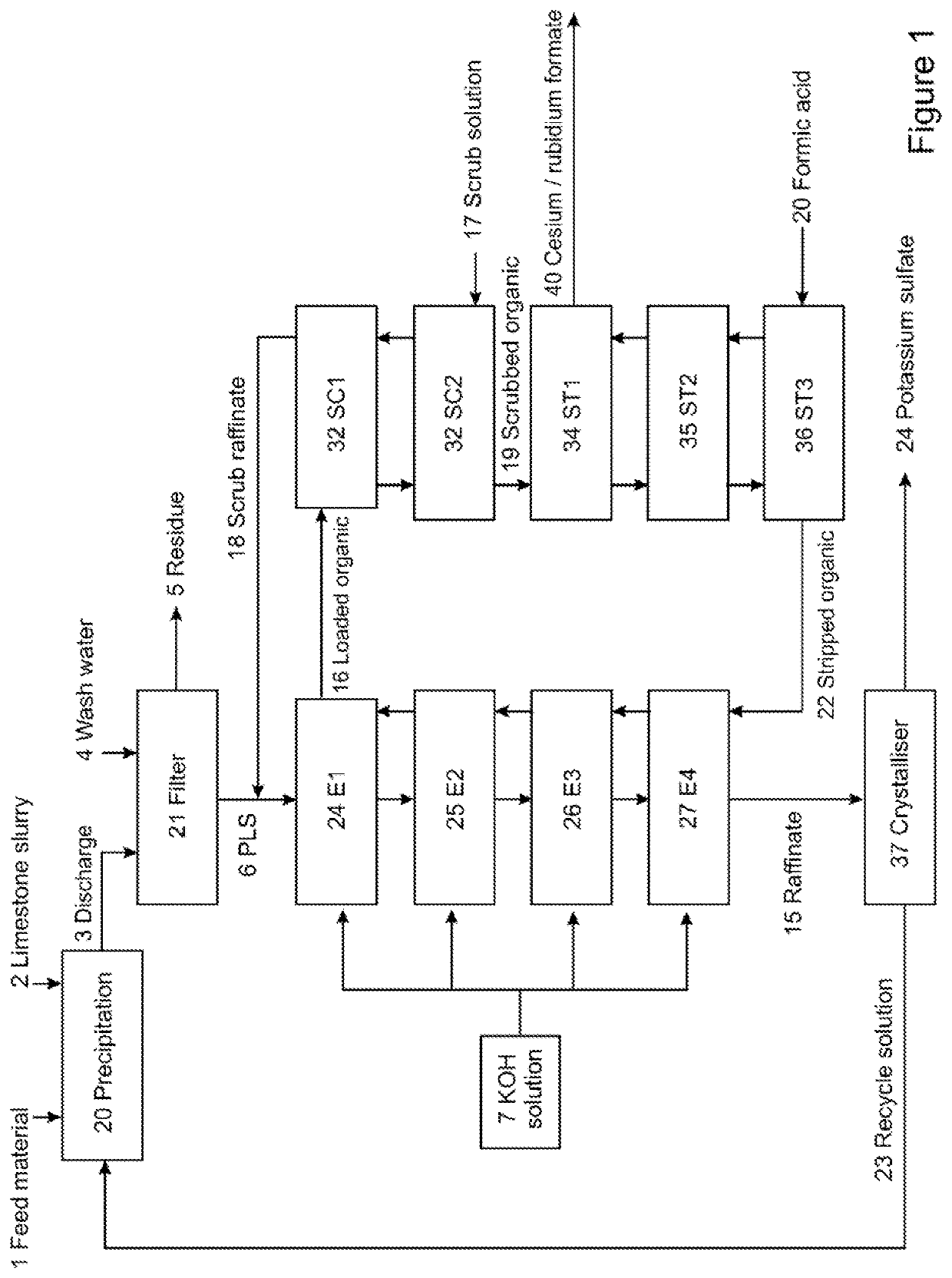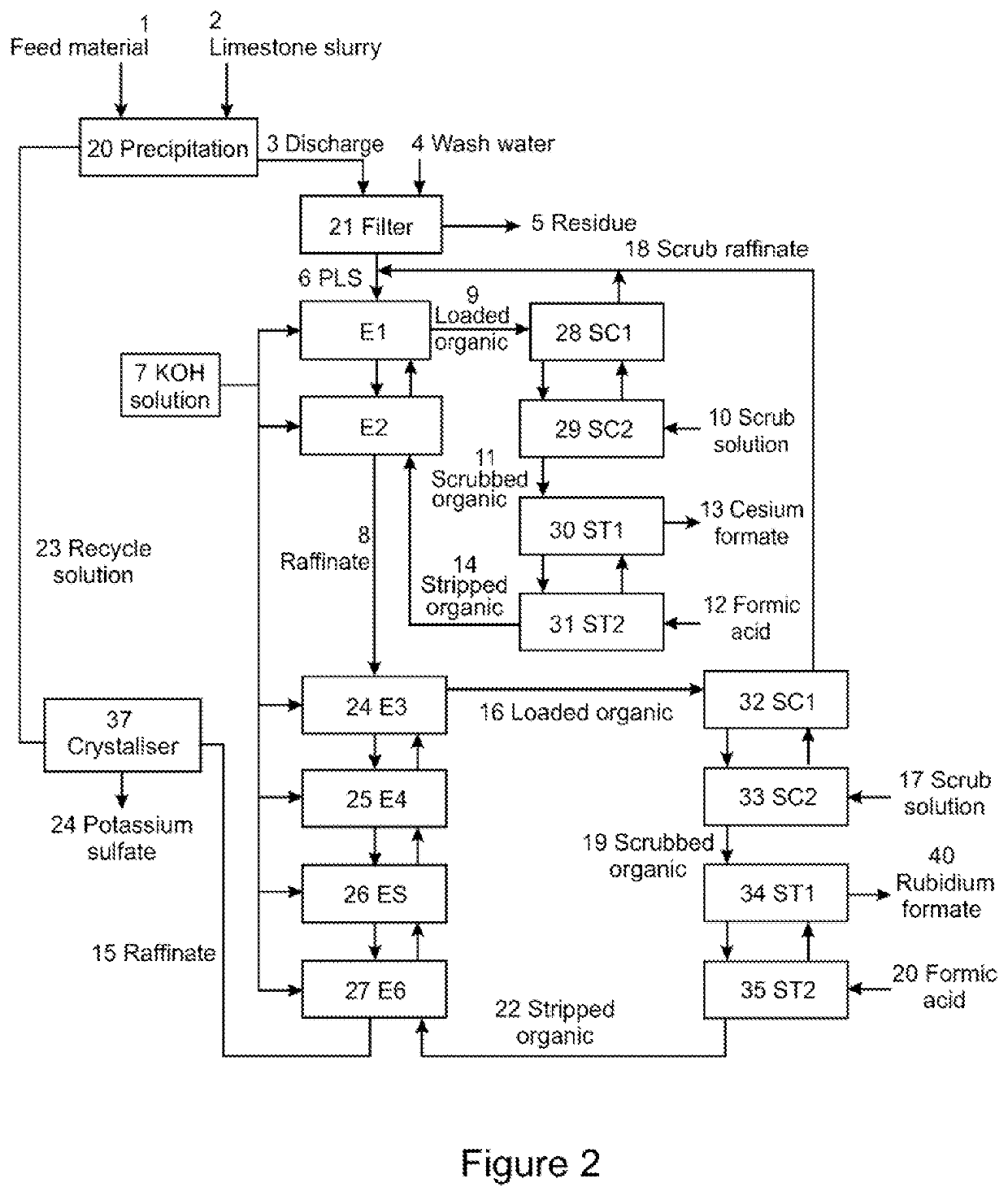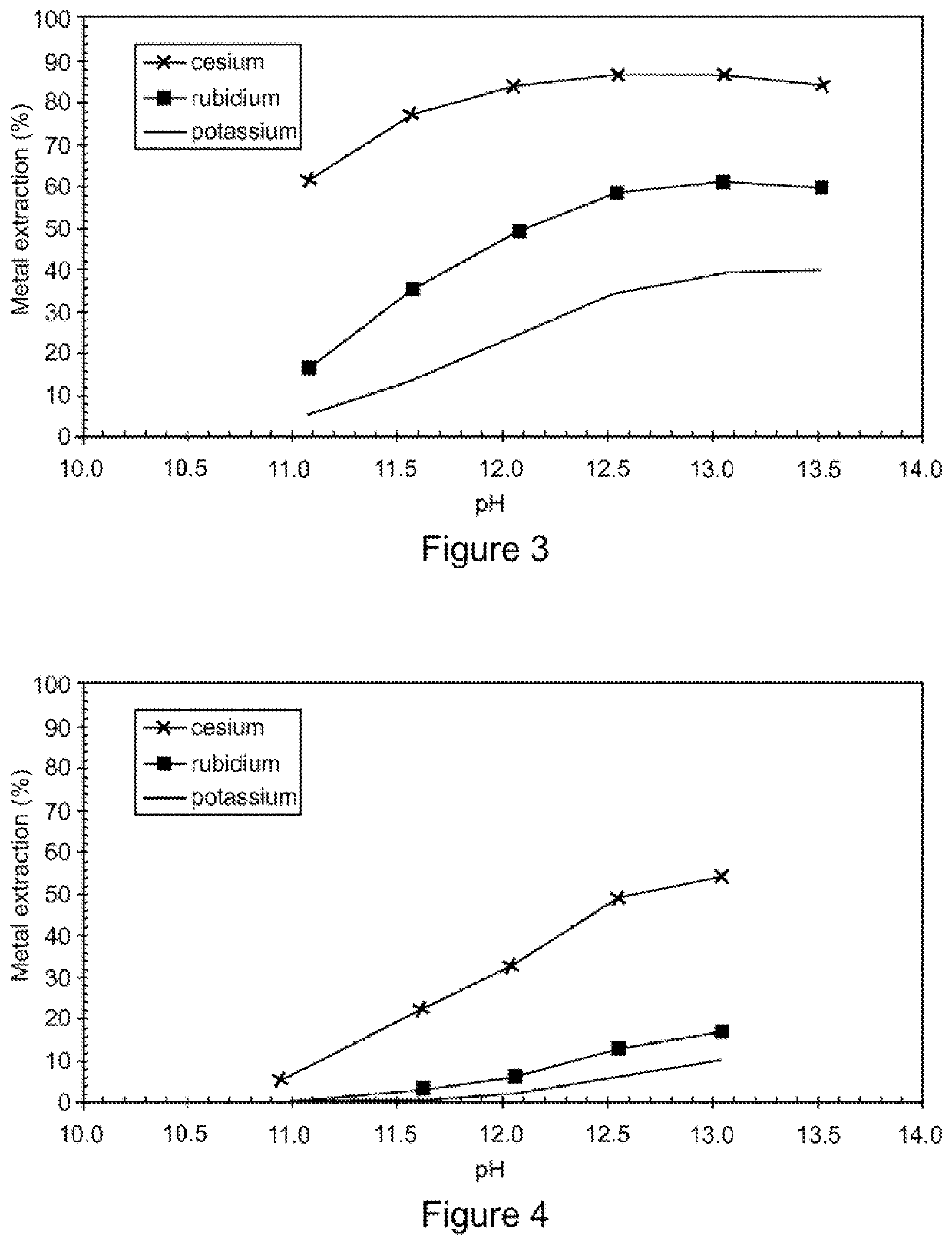Brine and method for producing same
- Summary
- Abstract
- Description
- Claims
- Application Information
AI Technical Summary
Benefits of technology
Problems solved by technology
Method used
Image
Examples
example 1
[0072]A mixed cesium, rubidium and potassium alum was prepared by leaching lepidolite in sulfuric acid and selectively crystallising the mixed salt from the leach liquor. The alum contained 6.16% K, 2.04% Rb, 0.25% Cs, 5.61% Al and 13.0% S. The alum was re-pulped in water and subject to precipitation using lime at pH 12.0. The precipitation slurry was filtered and the filtrate contained 8.10 g / L K, 3.75 g / L Rb, 0.43 g / L Cs and only 1 mg / L Al.
[0073]This solution was mixed with an organic solution containing 40% nonylphenol in Shellsol 2046™ at an O / A ratio of 1:1 and at different pH. Samples of the emulsion were taken at pH 11.0, 11.5, 12.0, 12.5, 13.0 and 13.5. The pH was increased using 50% KOH solution. The metal extraction vs pH is presented in FIG. 3. The data indicates excellent selectivity for cesium over rubidium and potassium and relatively good selectivity for rubidium over potassium.
example 2
[0074]The filtrate from Example 1 was mixed with an organic solution containing 10% nonylphenol in Shellsol 2046™ at an O / A ratio of 1:1 and at different pH. Examples of the emulsion were taken at pH 11.0, 11.5, 12.0, 12.5 and 13. The pH was increased using 50% KOH solution. The metal extraction vs pH is presented in FIG. 4. The data indicates excellent selectivity for cesium over rubidium and potassium.
example 3
[0075]The filtrate from Example 1 was mixed with an organic solution containing 25% nonylphenol at 0 / A ratios of 5:1, 3:1, 1:1, 1:3 and 1:5 at pH 12.5 for 4 minutes at room temperature. The phases were allowed to separate then filtered individually. The aqueous solutions were assayed for cesium, rubidium and potassium. The organic solutions were stripped with 10% sulfuric acid and the strip liquors were assayed for cesium, rubidium and potassium. The results are presented as a McAbe Thiele diagram in FIG. 5. The diagram indicates that >88% Rb can be extracted from the liquor in 4 stages at an advance 0 / A ratio of 0.4:1, resulting in a loaded organic solution containing 0.165 g / L Cs and 1.65 g / L Rb.
[0076]As can be seen from the above description, the brine and method for producing same of the present invention, being in particular a cesium and rubidium formate brine and a method for producing same, overcome substantially the problems identified in the prior art. As noted herein, the ...
PUM
| Property | Measurement | Unit |
|---|---|---|
| Ratio | aaaaa | aaaaa |
| Efficiency | aaaaa | aaaaa |
| Specific gravity | aaaaa | aaaaa |
Abstract
Description
Claims
Application Information
 Login to View More
Login to View More - R&D
- Intellectual Property
- Life Sciences
- Materials
- Tech Scout
- Unparalleled Data Quality
- Higher Quality Content
- 60% Fewer Hallucinations
Browse by: Latest US Patents, China's latest patents, Technical Efficacy Thesaurus, Application Domain, Technology Topic, Popular Technical Reports.
© 2025 PatSnap. All rights reserved.Legal|Privacy policy|Modern Slavery Act Transparency Statement|Sitemap|About US| Contact US: help@patsnap.com



